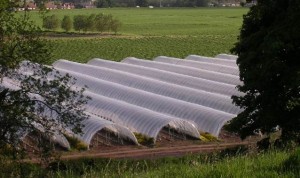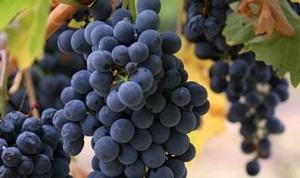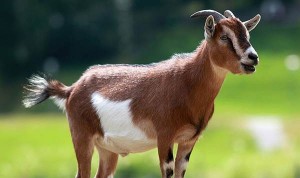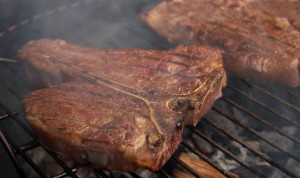Under construction!
UHPSI has a large number of energized discussions through which new topics and potential research areas emerge. Many of these take substantial effort to evaluate. While they look good on the surface, a closer inspection is needed to assess their potential. During the vetting process, we often find that ideas are less novel than we originally thought, that research projects have been done before, or that certain tools already exist. In many cases, there is little sense in reinventing the wheel by pursuing topics that have been explored before. However, in some of cases there is more work to be done in bringing findings to those who need them most, in expanding on old ideas, on in forming connections between synergistic subjects. On this page you will find various ideas that we have considered to one degree or another. Some of these are relatively new, while others highlight work that has been done before. We hope you’ll take a look and chip in your two-cents.
 HIGH TUNNELS • Greenhouses and high tunnels are used across the world. They provide a way to concentrate solar energy and moisture, effectively increasing the length and potential of the growing season. High tunnels provide a relatively low cost alternative to glass and metal-framed greenhouse, and are well suited to regions with cold shoulder seasons, mineral soils, and limited rainfall. The High Plains are limited by just these factors, yet neither greenhouses nor high tunnels appear as ubiquitous as we would expect. Should these technologies be further explored and promoted? Let us know! • Read more…>>
HIGH TUNNELS • Greenhouses and high tunnels are used across the world. They provide a way to concentrate solar energy and moisture, effectively increasing the length and potential of the growing season. High tunnels provide a relatively low cost alternative to glass and metal-framed greenhouse, and are well suited to regions with cold shoulder seasons, mineral soils, and limited rainfall. The High Plains are limited by just these factors, yet neither greenhouses nor high tunnels appear as ubiquitous as we would expect. Should these technologies be further explored and promoted? Let us know! • Read more…>>
 MONARCHS • Monarch butterflies have an extensive range covering much of the U.S., Southern Canada, and eastern Mexico. During its caterpillar phase, this iconic species depends on milkweed (Asclepia spp). However, in recent decades milkweed has suffered due to climate change, pesticide use, and habitat loss, in turn putting the monarch at risk. Until recently the USDA ran a Wildlife Habitat Incentive Program to support conservation-minded land owners in the preservation of critical habitat. What if there were incentives for land managers to support monarch habitat? Would you consider this? Let us know! • Read more…>>
MONARCHS • Monarch butterflies have an extensive range covering much of the U.S., Southern Canada, and eastern Mexico. During its caterpillar phase, this iconic species depends on milkweed (Asclepia spp). However, in recent decades milkweed has suffered due to climate change, pesticide use, and habitat loss, in turn putting the monarch at risk. Until recently the USDA ran a Wildlife Habitat Incentive Program to support conservation-minded land owners in the preservation of critical habitat. What if there were incentives for land managers to support monarch habitat? Would you consider this? Let us know! • Read more…>>
 VITICULTURE • Outside of river valleys, the High Plains are generally considered ranching country. But what about grapes? Grape vines generally require moisture in winter and spring months, and relatively warm and dry conditions during the summer months. They prefer intense sunlight and well drained soils. With a little irrigation, this sounds a lot like Ucross, leading us to wonder whether viticulture has a place in the region. Dr. Sadanand Dhekney at the University of Wyoming certainly thinks so. Could local social, economic, and ecological landscapes benefit from selective grape production? Let us know! • Read more…>>
VITICULTURE • Outside of river valleys, the High Plains are generally considered ranching country. But what about grapes? Grape vines generally require moisture in winter and spring months, and relatively warm and dry conditions during the summer months. They prefer intense sunlight and well drained soils. With a little irrigation, this sounds a lot like Ucross, leading us to wonder whether viticulture has a place in the region. Dr. Sadanand Dhekney at the University of Wyoming certainly thinks so. Could local social, economic, and ecological landscapes benefit from selective grape production? Let us know! • Read more…>>
 GOATS • While the High Plains are littered with beef cattle, a familiar and reliable species, they are not the best at keeping certain invasive species at bay. In some areas, like Ucross, sheep lend a hand, leading us to contemplate the role of animals with less refined palates. West highland cattle and goats, for example, are known to eat most anything living. Though broadening the market for uncommon meats would a major hurdle, in the long run, raising less selective animals could save thousands in management costs. Should mixed- or alternative-species grazing be promoted in the region? Let us know! • Read more…>>
GOATS • While the High Plains are littered with beef cattle, a familiar and reliable species, they are not the best at keeping certain invasive species at bay. In some areas, like Ucross, sheep lend a hand, leading us to contemplate the role of animals with less refined palates. West highland cattle and goats, for example, are known to eat most anything living. Though broadening the market for uncommon meats would a major hurdle, in the long run, raising less selective animals could save thousands in management costs. Should mixed- or alternative-species grazing be promoted in the region? Let us know! • Read more…>>
 GRAZING PLANS • With ranching country all around us, we couldn’t help but think of how valuable a grazing planning tool could be. Such a tool might help to quantify pasture health, project animal weight gain, or use climatic, soil, and intake data to estimate rotation dates. We found that these were hardly new ideas, and folks across the globe have already built a number of these decision support tools. After seeing how many good tools were already out there, we began to wonder why they weren’t more common. Have you used a grazing planner such as one of these (1, 2, 3)? Why or why not? Let us know! • Read more…>>
GRAZING PLANS • With ranching country all around us, we couldn’t help but think of how valuable a grazing planning tool could be. Such a tool might help to quantify pasture health, project animal weight gain, or use climatic, soil, and intake data to estimate rotation dates. We found that these were hardly new ideas, and folks across the globe have already built a number of these decision support tools. After seeing how many good tools were already out there, we began to wonder why they weren’t more common. Have you used a grazing planner such as one of these (1, 2, 3)? Why or why not? Let us know! • Read more…>>
 MOBILE SLAUGHTERHOUSES • Ranching is one of the most common industries on the High Plains, but ranchers continue to truck animals long distances for processing. USDA inspected processing facilities, which are required if meat is to be sold or transferred across state lines, are few and far between, with only one in all of Wyoming. Certified “Mobile Slaughter Units” (MSUs) are becoming more common in other states, and have been considered in WY before. While MSUs have a much smaller capacity, would such a processing facility be useful to your operation? Is this something we should revisit? Why or why not? Let us know! • Read more…>>
MOBILE SLAUGHTERHOUSES • Ranching is one of the most common industries on the High Plains, but ranchers continue to truck animals long distances for processing. USDA inspected processing facilities, which are required if meat is to be sold or transferred across state lines, are few and far between, with only one in all of Wyoming. Certified “Mobile Slaughter Units” (MSUs) are becoming more common in other states, and have been considered in WY before. While MSUs have a much smaller capacity, would such a processing facility be useful to your operation? Is this something we should revisit? Why or why not? Let us know! • Read more…>>
